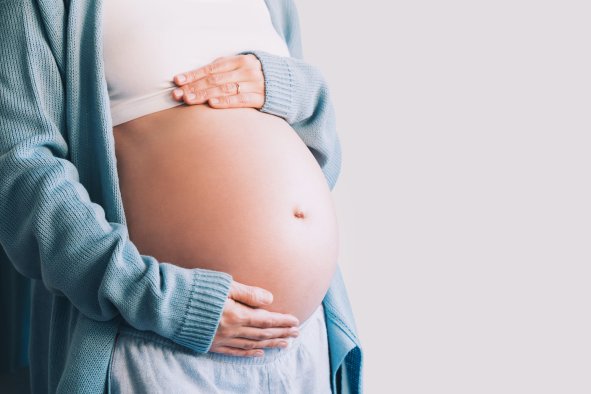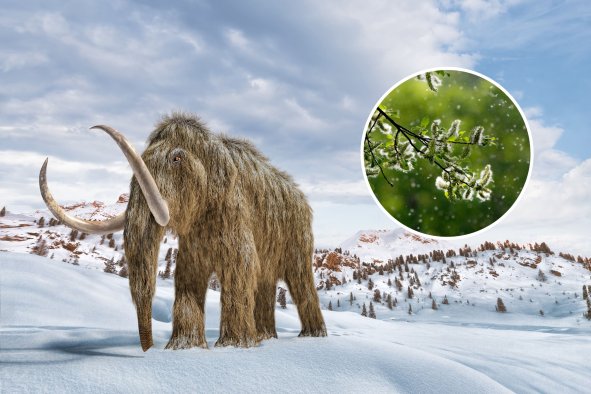A new study has provided a detailed list of wildlife species present at the Huanan Seafood Wholesale Market in Wuhan, China, believed to be a possible source of the COVID-19 pandemic.
The study analyzed over 800 samples taken from the market in early January 2020 by the Chinese Center for Disease Control and Prevention (CDC), just after the market was closed, and from viral genomes collected from early COVID-19 patients.
The findings reinforce the theory that the pandemic likely began in late 2019 when animals infected with SARS-CoV-2 were brought into the market and cast doubt over other possible origins, such as a lab leak from the Wuhan Institute of Virology.
"This paper slots into many other studies over the last few years that have been building the case for this very clearly being a natural virus that spilled over, very likely at the Wuhan seafood market," Kristian Andersen, co-corresponding author and professor at Scripps Research, told Newsweek.
The research team performed a reanalysis of data published earlier by the Chinese CDC, which had shared the sequencing information openly. Their updated analysis provides new insights, identifying potential animal carriers of SARS-CoV-2, including raccoon dogs and civet cats whose genetic material was found in the same market stalls as the virus.
Investigators from the Chinese CDC had swabbed floors, walls, animal cages, carts and other surfaces in the market as part of their early 2020 investigation.
Though the live animals had been removed by the time they arrived, they were able to obtain RNA sequences from viruses, bacteria, plants, animals and humans that were present in the samples. RNA is similar to DNA with some differences, such as that DNA is double-stranded, while RNA is single.
SARS-CoV-2 was found in close proximity to genetic material from several wildlife species—in some cases they were even found on the same swabs.
"When we see samples that contain both the susceptible animals as well as the virus itself, that's really unheard of in terms of the granularity for understanding the origin of the pandemic outbreak," Andersen said.
"The level of detail that we have for this particular one is really astounding to me."
Raccoon dogs, small fox-like animals with markings similar to raccoons, were the most genetically abundant animal in the market samples, and their DNA was identified in the same locations as the virus. Raccoon dogs are also known to be susceptible to coronaviruses and have previously carried the virus responsible for the SARS outbreak in 2003.
"Many of the key animal species had been cleared out before the Chinese CDC teams arrived, so we can't have direct proof that the animals were infected," co-corresponding author Florence Débarre of the French National Center for Scientific Research (CNRS) said in a statement.
"We are seeing the DNA and RNA ghosts of these animals in the environmental samples, and some are in stalls where SARS-CoV-2 was found too. This is what you would expect under a scenario in which there were infected animals in the market."
"This is a field where authors know that outputs will be scrutinized, and so analysis must be careful," said Alice Hughes, group leader at the Biodiversity Analytics of Terrestrial Ecosystems (BAT) group at the University of Hong Kong, in a statement to the Science Media Centre. Hughes was not involved in the study.
"The paper lends extra support to the potential role of Huanan in the early stages of the pandemic and demonstrates the movement of animals, including wildlife, across China for trade and consumption," she said.
There are other theories for how traces of the virus wound up at the market, though. Namely, that infected humans introduced it to the animals. Yet analysis of the evolutionary pathways of the earliest viral genomes linked to the pandemic in this study indicates that few, if any, humans were infected at the time of the market outbreak.
"Any hypothesis of COVID-19's emergence has to explain how the virus arrived at one of only four documented live wildlife markets in a city of Wuhan's size at a time when so few humans were infected," the authors wrote. Wuhan had a population of more than 13.7 million in 2022.
However, the study does not definitively prove which species transmitted SARS-CoV-2 to humans; instead, it identifies a shortlist of animals that were most likely to have played a role, including raccoon dogs, civet cats, bamboo rats and porcupines.
"To somebody who has studied virus emergence and evolution for 15 years, I can guarantee you that all of us sitting here have never seen this level of detail. But again, this doesn't amount to outright proof," Andersen said. "There's never going to be the one single piece of smoking-gun evidence."
The research is also limited by its inability to precisely determine when viral or animal genetic material was deposited at the market, preventing confirmation of chronological alignment between samples.
Still, the data provides more clues to trace the origins of the virus and prevent future zoonotic, or interspecies, outbreaks.
Andersen highlighted the fact that SARS-CoV-2 wasn't the only virus found in the samples and that animal markets present real dangers of future outbreaks.
"One thing that is important from this paper is that we found lots of other viruses in this market, including H9N2, which is another virus that's poised for human emergence," he said. "In fact, we found a whole potpourri of other viruses in general from the animals that are poised for emergence.
"As you keep playing out this game constantly on a daily basis all across many parts of the world, but certainly Southeast Asia, where you funnel farmed animals into markets in dense urban centers to sell for consumption, then, of course, pandemics are going to happen as a result."
Michael Worobey, another co-author on the paper, added in a statement: "The truth is, since the pandemic started more than four years ago, although there has been an increased focus on lab safety, not much has been done to decrease the chance of a zoonotic scenario like this happening again."
Is there a health problem that's worrying you? Do you have a question about coronavirus? Let us know via health@newsweek.com. We can ask experts for advice, and your story could be featured in Newsweek.
References
Crits-Christoph, A., Levy, J. I., Pekar, J. E., Goldstein, S. A., Singh, R., Hensel, Z., Gangavarapu, K., Rogers, M. B., Moshiri, N., Garry, R. F., Holmes, E. C., Koopmans, M. P. G., Lemey, P., Peacock, T. P., Popescu, S., Rambaut, A., Robertson, D. L., Suchard, M. A., Wertheim, J. O., Rasmussen, A. L., Andersen, K. G., Worobey, M., Débarre, F. (2024). Genetic tracing of market wildlife and viruses at the epicenter of the COVID-19 pandemic. Cell, 187, 5468–5482. http://dx.doi.org/10.1016/j.cell.2024.08.010
Disclaimer: The copyright of this article belongs to the original author. Reposting this article is solely for the purpose of information dissemination and does not constitute any investment advice. If there is any infringement, please contact us immediately. We will make corrections or deletions as necessary. Thank you.



